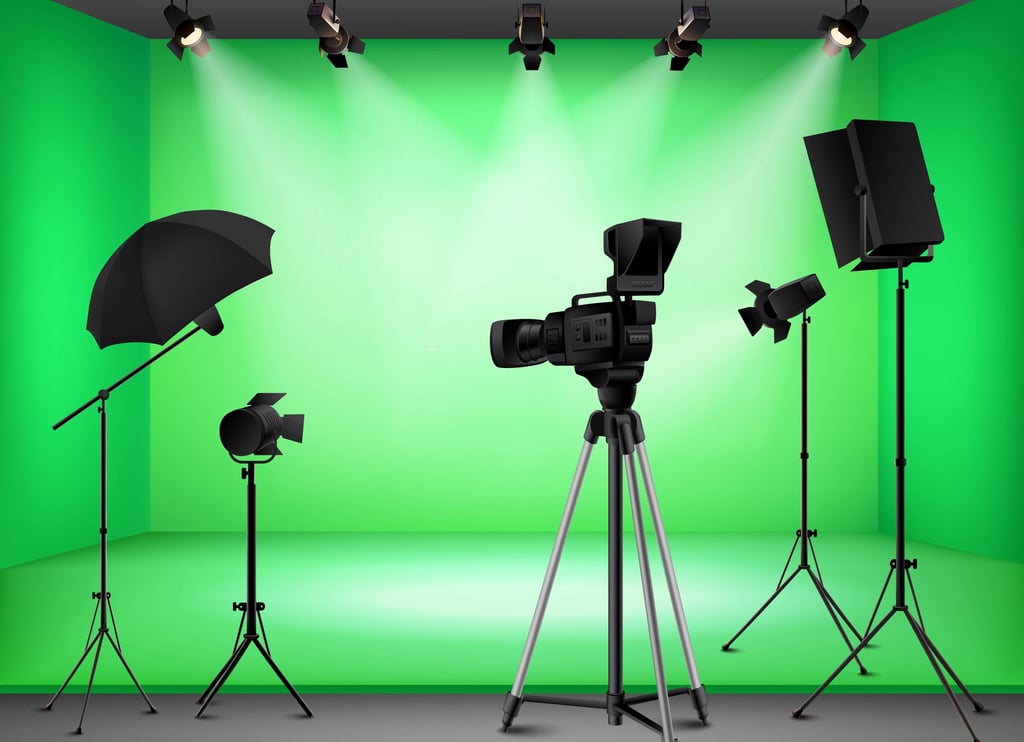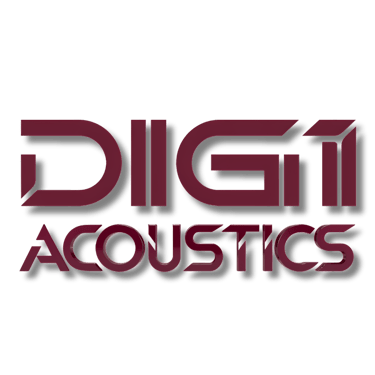Chroma Studio Lighting and Ceiling Grid Setup
DIGI Acoustics


Creating a professional chroma key studio setup isn't just about hanging a green screen and hitting record. Lighting is the heart of any high-quality chroma studio. Without proper lighting and ceiling grid planning, even the best cameras and green backdrops can't save you from shadows, color inconsistencies, or time-consuming post-production headaches.
In this comprehensive guide, you'll discover everything you need to know about chroma studio lighting and ceiling grid setup—from choosing the right LED soft panels to optimizing cool daylight lighting and arranging an efficient ceiling grid system.
And if you're looking for professional-grade studio setups in India, especially in Hyderabad, Digi Acoustics stands out as the trusted name for high-performance chroma studio lighting solutions.
1. What is a Chroma Studio?
A chroma studio, commonly referred to as a green screen studio, uses a solid color background (usually green or blue) that can later be replaced digitally with any image or video. It's widely used in video production, news broadcasting, film, photography, and YouTube content creation.
But here's the catch: chroma keying only works seamlessly with proper lighting and shadow control.
2. Importance of Lighting in Chroma Key Studios
Lighting determines whether your green screen background will key out smoothly or cause frustration in post-production.
Here’s why high-quality lighting is critical:
Eliminates shadows on the green screen
Ensures even color distribution
Separates the subject from the background
Prevents color spill onto the subject
Reduces post-production editing time
3. Types of Lighting Used in Chroma Studios
There are many types of studio lights, but the most effective for chroma key are:
A. LED Soft Panels
Provide diffused, flicker-free lighting
Consume less power and generate minimal heat
Offer adjustable brightness and color temperature
Are ideal for both background and subject lighting
B. Cool Daylight Lighting (5000K – 6500K)
Matches natural sunlight, making it ideal for digital camera sensors
Reduces shadows and maintains realistic skin tones
Works well with green and blue screen backgrounds
4. Essential Lighting Setup for a Chroma Studio
To get a professional chroma effect, follow this standard three-zone lighting setup:
1. Background Lighting
Use 2 soft LED panels at a 45-degree angle on either side of the green screen.
Maintain even lighting across the entire backdrop.
Avoid hotspots and underlit areas.
2. Subject Lighting
Place key and fill lights (LED soft panels) at 45 degrees from the subject.
Use cool daylight temperature to match the green screen lighting.
Aim for a natural, flattering light without overexposing the skin.
3. Back/Rim Lighting
Add a hair light or rim light from the ceiling or behind the subject.
This separates the subject from the green screen and eliminates green spill on hair or shoulders.
5. How to Set Up a Ceiling Grid for Studio Lights
A ceiling grid allows you to hang lights at fixed positions and adjust their height or angle easily. Here’s how to do it right:
A. Why Use a Ceiling Grid?
Keeps the floor clear of stands and cables
Provides flexible positioning for lights
Allows ceiling-mounted mics and other accessories
B. Materials Needed
Aluminum or steel pipes or truss system
Grid clamps and safety cables
Light hoists or manual pantographs
Secure wall or ceiling mounts
C. Ceiling Grid Layout Tips
Divide the grid into equal sections to cover the entire set
Place lights over each zone (background, subject, rim)
Use DMX-controlled mounts for automation and remote control
6. Tips for Perfect Chroma Lighting
Use diffusion: Softboxes or light modifiers on LED panels reduce harsh shadows
Avoid overlapping color temperatures
Keep lights at a 45° angle for best distribution
Control reflections from the floor and surroundings
Always use light meters or monitor histogram levels
7. Common Mistakes to Avoid in Chroma Studio Lighting
Uneven lighting on the background causes patchy green screen removal
Lighting too close to the subject increases green spill
Mixing light temperatures leads to inaccurate chroma keying
Using low-quality lights results in flickering and noise
8. How Digi Acoustics Delivers the Best Chroma Studio Lighting Setup
At Digi Acoustics, we specialize in turnkey chroma studio setups, offering:
LED Soft Panel installations with adjustable intensity and daylight temperature
Custom-designed ceiling grids tailored to your studio size
Balanced light distribution to eliminate shadows and color spill
Expert layout planning for optimized lighting angles
Acoustic treatments to enhance sound quality alongside lighting
Whether you're setting up a YouTube studio, film production space, or virtual classroom, Digi Acoustics ensures studio-grade results with every project.
9. Applications of a Well-Lit Chroma Studio
Video content creation (YouTubers, vloggers, educators)
Virtual sets in TV and film production
Corporate webinars and training
Photography and e-commerce product shoots
Live streaming studios
10. Cost and Budgeting for Chroma Studio Lighting
The cost depends on:
Studio size
Number of LED panels required
Ceiling grid complexity
Wiring and control systems
Digi Acoustics provides customized packages based on your needs, balancing budget and performance.
Frequently Asked Questions (FAQs)
1. What type of lighting is best for chroma keying?
LED soft panels with cool daylight temperature (around 5500K–6500K) are ideal for chroma key lighting as they offer even, soft, and flicker-free light.
2. Why is ceiling grid setup important in a studio?
It allows efficient light positioning, keeps the floor area free, and enhances studio workflow and safety.
3. Can I use regular LED bulbs for chroma lighting?
No. Regular bulbs lack the light spread, CRI, and flicker-free output needed for professional chroma keying.
4. How much space do I need for a chroma studio?
A minimum of 10x10 feet is recommended, with 8 feet height clearance to accommodate lighting and backdrop.
5. Do I need soundproofing in a chroma studio?
Yes. If you're recording audio, soundproofing is essential to avoid echoes and external noise. Digi Acoustics also provides complete acoustic treatments for chroma studios.
6. Can Digi Acoustics help with small studio spaces?
Absolutely. We offer modular setups tailored for compact home studios, offices, or streaming booths.
7. Is installation support provided?
Yes. Digi Acoustics offers end-to-end services from design consultation to installation, testing, and after-sales support.
Conclusion: Invest in Professional Lighting for Chroma Success
A professional chroma studio setup starts with precise lighting and a well-planned ceiling grid. Skimping on these can lead to poor video quality, endless post-production edits, and an unprofessional look.
With LED soft panels, cool daylight, and a smart ceiling grid system, you can achieve broadcast-quality video production.
Looking to get started with a studio-grade chroma lighting setup? Digi Acoustics offers expert planning, premium equipment, and complete execution to make your studio production-ready from day one.
Contact Digi Acoustics today to transform your creative vision into reality with the best chroma studio lighting and ceiling grid setup in Hyderabad and beyond.
we provide expert acoustics and soundproofing solutions
Important Links
+91 9100720404
© 2025 DIGI Acoustics. All rights reserved.
2-22-1/173/1, Bhagya Nagar Colony, Kukatpally, Hyderabad, Telangana 500072
Address


